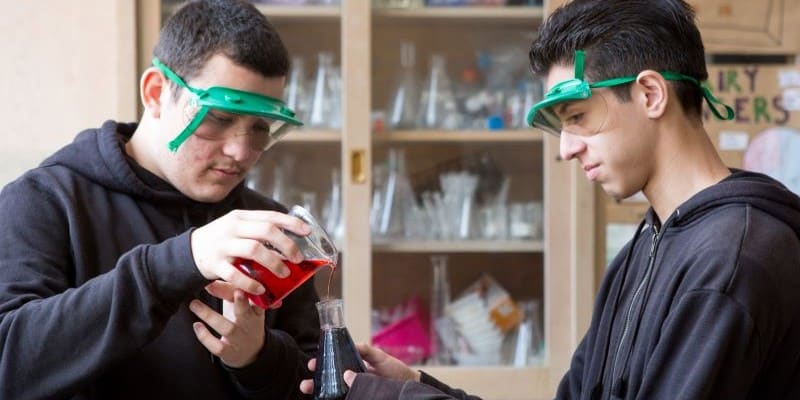The predominant assessment system in the US is in dire need of updating. The country needs to move to systems of assessments that give a more robust look at what students know and can do without distracting and taking away from learning time.
Jay McTighe, the famed education writer and consultant with 50 years of experience in education, has created a vision for what this could look like, and offers both hope and feasibility.
McTighe’s vision hinges on his observation of the impact of assessments—particularly standardized ones—used for accountability purposes.
As McTighe recently told me, “In many cases, the assessment tail seemed to be wagging the dog, the instruction and curricular dog. … [So] let’s put our attention to the tail. Let’s think about trying to better understand assessment and how to make the tail wag the dog in a better direction.”
This better direction for testing that McTighe envisions is outlined in his white paper titled “Measuring What Matters: It’s Time for an Assessment Overhaul.”
In it, he details a bold, yet attainable, three-part plan for redoing assessment that gives attention to three learning goals: acquisition, understanding, and transfer.
Acquisition focuses on the knowledge and skills we want students to acquire. Understanding refers to the comprehension of big ideas, like key concepts and principles in the major disciplines; along with the conceptualization of key processes, such as research methods, design thinking, or effective writing. And transfer refers to the ability of a learner to take something learned in one context and apply it in another.
McTighe’s proposed assessment system addresses these varied learning goals through a three-legged infrastructure to produce not just a singular snapshot of learning, but an entire photo album to grasp the full picture of education in schools.
The first leg
The first “leg” of this assessment stool would “be similar to what we have now,” in certain ways, McTighe said. “Content-oriented tests to test important knowledge and skills that students should acquire, typically within subject areas.”
McTighe, however, proposes a few adaptations to the current system.
For example, rather than having 50 different state tests that are not comparable, the National Assessment of Educational Progress (NAEP) could be used to provide reliable measures of student achievement in content areas of mathematics, reading, and writing.
A second change would employ a sampling system, similar in many respects to NAEP’s, so that every student would not need to be tested on the same things at the same time. For example, a representative sample of kids at each tested grade level would take the mathematics section, while a separate sample would take the reading test, and so on. Such a system could obtain reliable data for gauging student achievement at the school, district, and state levels, while concurrently saving significant testing costs.
The second leg
The second leg is a set of performance tasks embedded in the curriculum that engage students in applying their learning in realistic situations. The goal, according to McTighe, is to give “evidence of understanding and transfer.”
Rather than interrupting the flow of teaching with a traditional standardized test, these performance tasks would be based on curriculum standards and, thus, would be integrated into the natural classroom flow. A single performance task would also be able to gather evidence of achievement in multiple subjects, McTighe said. For example, a science task could include a mathematics and writing component, while also assessing important skills like critical thinking and creativity.
In McTighe’s vision, student performance on these tasks would then be graded in a way similar to Advance Placement exams in writing and the arts.
“Three times a year, schools in a region would close and teachers in those schools and administrators would come together at scoring sites to review the work that kids produced on the performance tasks and score them against well-developed rubrics and anchor papers, following interrater reliability protocols,” McTighe said.
Such a system would be, as McTighe acknowledges, difficult to convince some to implement. But he argues that the implementation challenge isn’t one of know-how, because our education system already has experience with such scoring systems.
He also argues that because the process of group scoring provides invaluable professional development for teachers, the costs of implementing this system could come from both training and assessment budgets, which would make it more affordable and feasible. And the professional development offered would be better than traditional teacher training.
The third leg
The third leg would be “curriculum-embedded local assessments.”
In his conception, McTighe pictures these assessments “including traditional course exams that many high schools have now, but also things like genius hour or personal projects, passion projects that kids are interested in. It could involve exhibitions. It could involve a variety of more authentic learnings that are otherwise outside of the mold of traditional tests.”
Unlike the other two legs, these local assessments would be unique to each school or district, and thus, wouldn’t yield comparability data like the other two legs.
Instead, this third component would enable local schools and districts to have a stake and investment in a more complete assessment system, as well as to “complement things that are falling through the cracks from the first two legs,” McTighe said. “[This is] meant to round out the assessment picture and to make sure that we’re assessing all the things that we claim to value, not just the things that are easiest to test and quantify.”
This more broadly reflects McTighe’s vision that an assessment system should not only yield accountability data on the easiest-to-measure learning outcomes. It should serve to enrich and improve learning on the most important skills that will prepare today’s children for thriving in an ever-more complex world.



